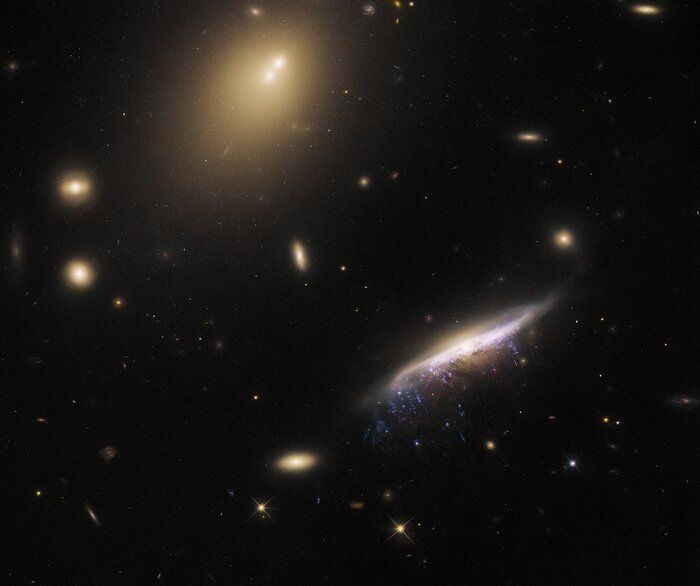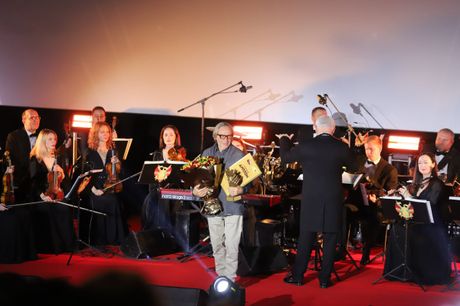Hubble Space Telescope took a picture of the «jellyfish» galaxy
15:40, 21 March

ESA/Hubble & NASA
The galaxy JW100 features prominently in this image from the NASA/ESA Hubble Space Telescope, with streams of star-forming gas dripping from the disc of the galaxy like streaks of fresh paint. These tendrils of bright gas are formed by a process called ram pressure stripping, and their resemblance to dangling tentacles has led astronomers to refer to JW100 as a ‘jellyfish’ galaxy. It is located in the constellation Pegasus, over 800 million light-years away.
- Share on Facebook
- Share on VK
- Share on Twitter
Ram pressure stripping occurs when galaxies encounter the diffuse gas that pervades galaxy clusters. As galaxies plough through this tenuous gas it acts like a headwind, stripping gas and dust from the galaxy and creating the trailing streamers that prominently adorn JW100.
This image contains a remarkably bright area of diffuse light towards the top of this image which contains two bright blotches at its core. This is the core of IC 5338, the brightest galaxy in the galaxy cluster, known as a cD galaxy.






